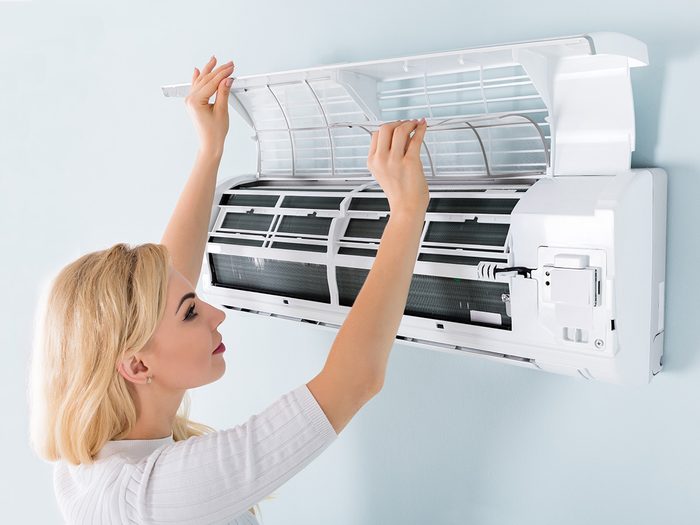
Use HEPA filters to fight allergies
These high-efficiency particulate air (HEPA) filters are found in most air purifiers and many vacuums. They’re top of the line when it comes to sucking up harmful particles in your home that can cause allergies, including pet dander, pollen, dust mites and smoke on a microscopic level. Your best bet is to go with a central filter rather than a single room filter, as the latter has not been proven to be effective in improving allergy symptoms, according to Steven Davis, MD, ENT, allergy-and-sinus specialist and founder and director of Breathe Clear Institute in Torrance, California.
Wondering what causes spring allergies? We have the scoop.
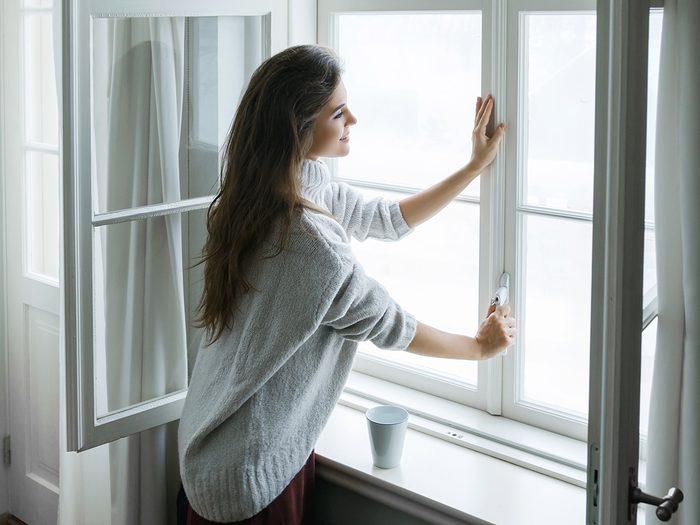
Keep the windows closed
It can be tempting to open the windows to let in some fresh air once the weather starts getting nice, but this is a quick and easy way to let outdoor pollens enter your home. That’s why Dr. Davis suggests keeping both windows and doors closed and making sure they are well sealed. “If possible, create a sealable entryway where you can hang your jackets and keep your shoes,” he says. “Three per cent tannic acid spray helps neutralize pollens that may be stuck to carpets, doormats or even drapes.”
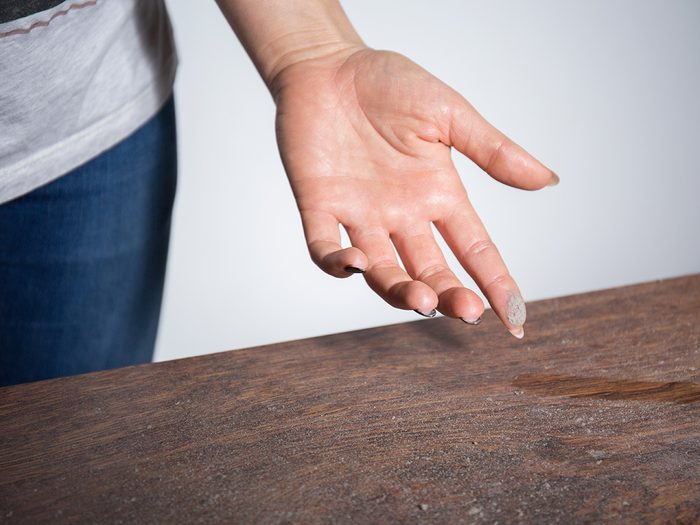
Don’t forget to dust
It might not be your favorite weekend activity, but dust collects and settles into plenty of areas of your home and makes allergies far worse. Reina Patel, DO, a pediatrician at Children’s Health and assistant professor at UT Southwestern Medical Center, recommends wiping down areas that you know collect dust at least one to two times weekly. “Also, remember that both blinds and curtains can collect dust so try to dust your blinds twice weekly as well and, if possible, also wash your curtains often.”
Here’s what to do when you’re allergic to things that aren’t seasonal (like jewellery, sun, semen and more.)
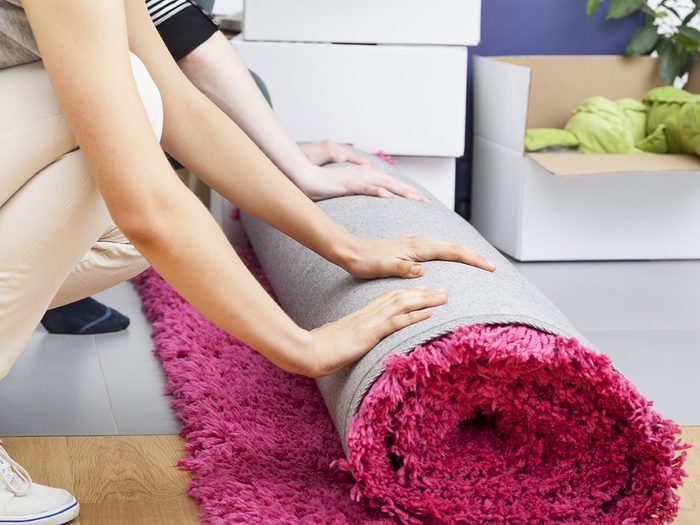
Think twice about carpets
Carpets feel nice on your feet — and they look nice too — but there’s a reason so many doctors prefer hardwood flooring instead. Carpets can be a serious culprit for allergen build up and cause allergies. “If possible, try to remove the carpet,” suggests Dr. Patel. “Suitable replacements for carpet would be tile, hardwood, and laminate.” If removing your carpet isn’t an option, low-pile carpeting is the lesser of two evils. Whichever carpet you have, try your best to wash them often, especially during the peak of allergy season.
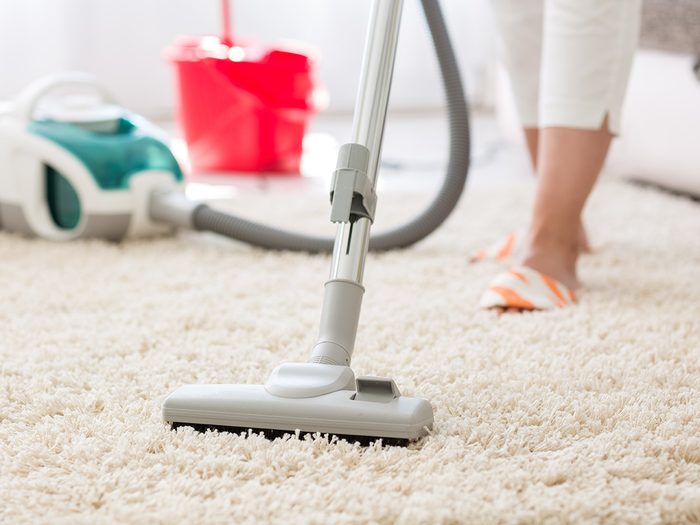
Vacuum at least once a week
Doctors agree that regular vacuuming is key to keeping allergens at bay. But not all vacuums are created equal. “Some are not as helpful for removing allergens, such as dust mites, so select a high-efficiency model,” says Dr. Davis. “Ordinary vacuum bags allow powder and allergens to leak out into the air while special allergy bags don’t allow the powder to escape.” Don’t have time to vacuum, especially during high pollen season? Invest in a Roomba, which works automatically and has a high-efficiency filter that collects 99 per cent of dust, mites, and allergens. By the time you get home from work, your place will be spotless.
Have brand new adult allergies set in? Here’s what you can do.

Keep pets out of the bedroom
Pet lovers know this can be hard, but if it’s at the risk of your own health, sometimes you have to keep Fido or Fluffy away from the areas of your home in which you spend the most time. If you own a dog, keep it away from all bedrooms and try to train it not to jump on the couch or places where humans will be sitting for long periods. If you own a cat, Dr. Davis recommends keeping it exclusively either outdoors or indoors so it does not bring allergens such as pollen into your home from outside. “If you’re lucky and your cat tolerates it, bathing your feline can help you with your allergies for a day or so,” she says. “But remember that there is no such thing as a hypoallergenic cat and tomcats are the most allergenic.”
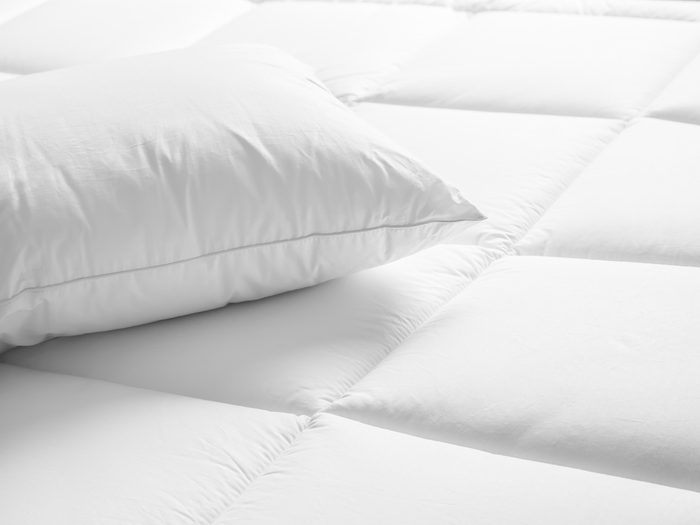
Use special mattress and pillow covers
“One of the best ways to help with a dust mite allergy is to separate yourself from the mites by using special impermeable mattress and pillow covers,” says Dr. Davis. “Dust mites thrive, not only in your mattress and pillows but also in drapes, carpet, stuffed animals and upholstery, so avoid having these items in your bedroom if at all possible.” When it comes time to wash your bedding, he recommends doing so once a week at a minimum temperature of 55 degrees Celsius. “Even freezing your sheets is effective at reducing your dust mite exposure significantly,” he adds.
One woman on how the Paleo diet fixed her food allergies.
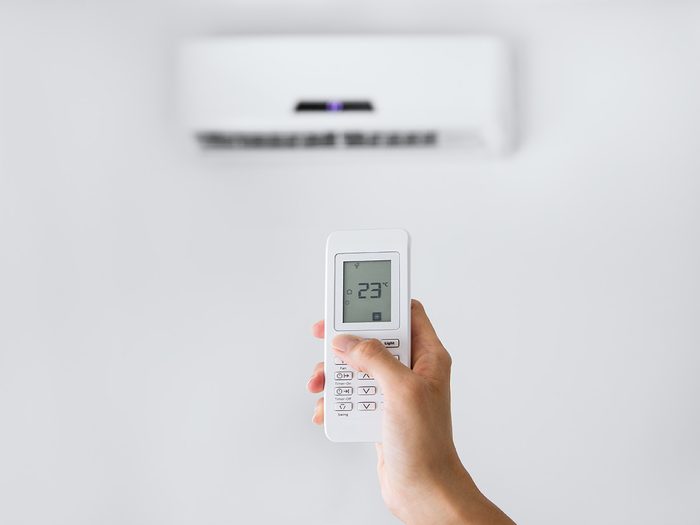
Place dehumidifiers in most rooms
Dr. Davis explains that mold thrives in moist environments such as plants, basements, bathrooms, air conditioning, refrigerator coils and even stuffed furniture. That’s why a dehumidifier can come in handy. It can help make high-risk areas less appealing to mold. “Install humidity gauges to help keep track of how dry you are keeping the rooms in your home,” Dr. Davis suggests. “Your goal is a humidity level of less than 50 per cent.” Additionally, keep small, unvented spaces lit because molds prefer dark areas.
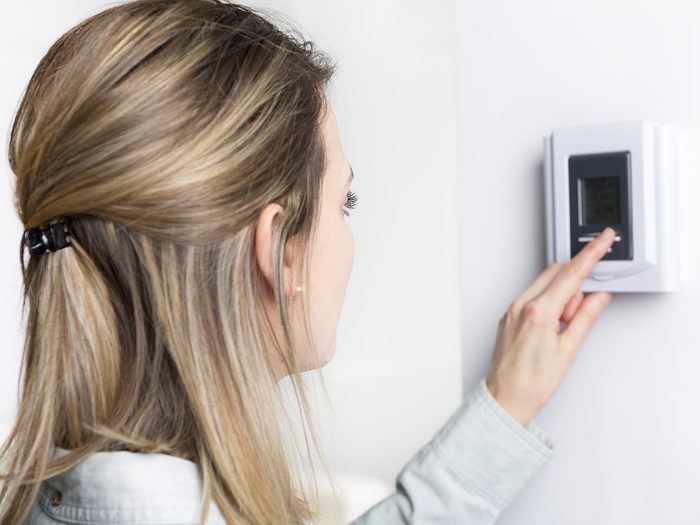
Keep an eye on the temperature
Making sure your thermostat stays at a reasonable temp will do more than save money on your heating bill: The hotter your house, the more humid it is likely to be, and this is where dust mites like to thrive. “When the temperature is higher than 22 degrees Celsius, dust mites create nests in sofas, carpets, bedding and any woven material,” says Tania Elliott, MD, chief medical officer of EHE. “Keep humidity levels to a minimum by using an air conditioner in humid environments or simply opening the windows in dryer environments.”
Do I have a cold or allergies? Here’s how you can tell.

Don’t leave food lying around
Perhaps you’ve heard about a very ugly bug called a cockroach. Even if you don’t live in an urban environment, which is most often associated with cockroaches, a pest problem may still be on your hands. Cockroach droppings and the skins they cast off can trigger allergy symptoms. Dr. Elliot recommends never leaving food out on kitchen counters and avoid eating in the bedroom or on the couch whenever possible. If you do have a pest problem, bait-traps can be useful.
Food sensitivities and seasonal allergies: The lowdown

Cut the clutter
Doctors might not be immune to messiness, but those who know how to ward off allergies know not to let clutter pile up. The more clutter, the more opportunity for dust and mold to collect itself. That’s why doctors recommend open areas in rooms that have humidifiers and purifiers present. This is especially important in bedrooms, where people spend the majority of their time at home.
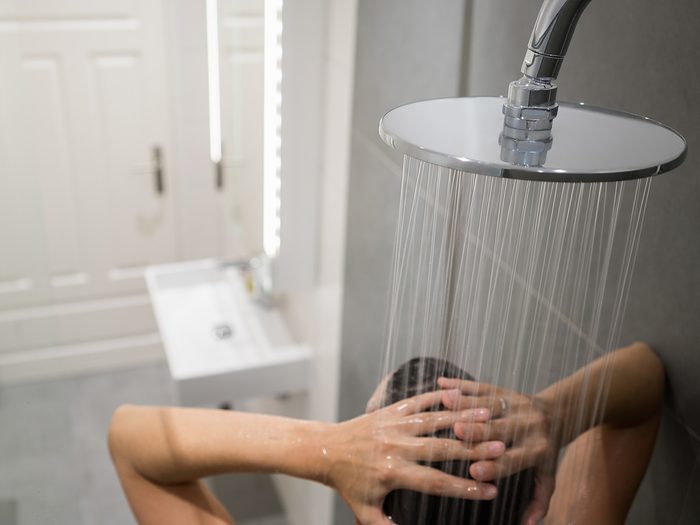
Shower at the end of the day
If you’re the kind of person who prefers to shower in the morning, you may want to consider switching your routine up during allergy season. Coming home after a long day of being exposed to outdoor allergens only brings them into your home — especially if you re-wear certain clothing items and store your shoes in your closet as opposed to an entryway. To minimize the exposure of allergens in your home, consider showering, or at least rinsing off, at night.

Be ready with the nasal saline rinse
If you are unexpectedly exposed to a high concentration of allergens, Dr. Davis recommends using sinus rinses, such as Simply Saline Sterile Saline Nasal Mist, Allergy & Sinus Relief, to help minimize your symptoms and get relief. These over-the-counter extra strength sprays help alleviate congestion without harming the nasal tissue, so you can breathe easier in and out of your home.
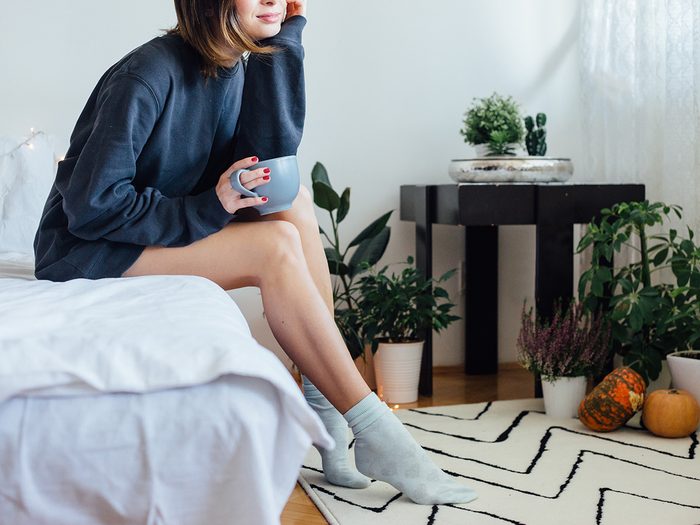
Consider houseplants
Having more greenery inside your home might seem like a counterintuitive method of relieving allergies, but there’s a growing body of research that suggests that houseplants can be a solution for clean air and better health. One study from the State University of New York found that certain plants have the ability to absorb volatile organic compounds, also known as VOCs, which can be harmful and allergy-inducing.
This houseplant has healing powers — and it’s worth every cent.
